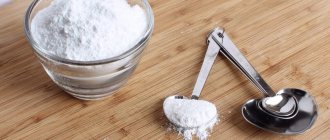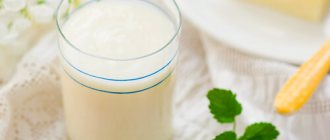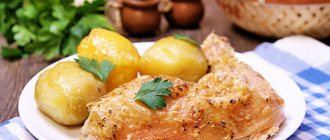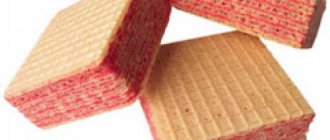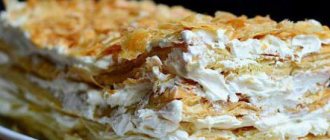Milk is a product that is used almost everywhere. This food item can be converted into other products such as butter, curd and other dairy products. It is often drunk fresh and used to make cocktails, cereals, baked goods, etc. There are a lot of recipes in recipe books that use milk as an ingredient for a dish. Interestingly, the amount of milk in the recipes is measured in grams, which confuses many people. Today we will answer your question, how much milk is in a 200 ml glass. and 250 ml.
It is important to follow the instructions (recipe) exactly in recipes; if you break the rules for preparing a dish, you may not get what you had in mind.
How many grams and ml. milk in a glass
It is convenient to measure the weight of milk with glasses if you need to measure a large amount of milk. But you don’t have a measuring cup or beaker available. But there are situations when you need to measure out a small amount of milk. For this we recommend using a tablespoon and a teaspoon. You can read information on this method in our article on how much milk is in a spoon.
| Name of the glass | Weight in grams | Volume in ml. |
| In a cut glass (filled to the rim) | 250 grams of milk | 250 ml. milk |
| In a cut glass (filled to the brim) | 200 grams of milk | 200 ml. milk |
| In a glass of 250 milliliters | 250 grams of milk | 250 ml. milk |
| A glass of milk contains 200 ml. | 200 grams of milk | 200 ml. milk |
250 grams of milk = 250 milliliters of milk
200 grams of milk = 200 milliliters of milk
Very often in the kitchen you have to measure food. It's good to have measuring scales. What to do if the battery in the measuring scales is not there or is dead? We bring to your attention a measuring table for food products, designed specifically to use ordinary cutlery to measure the weight you need according to the recipe. To better understand volume measurements, visit our liquid measurement chart.
How many grams of mayonnaise in a spoon
| spoon of mayonnaise | Mayonnaise spoon weight | Calorie content |
| In one heaped tablespoon | 45 grams of mayonnaise | 281 kcal |
| 1 level tablespoon | 25 grams of mayonnaise | 157 kcal |
| One heaped teaspoon | 15 grams of mayonnaise | 94 kcal |
| In one level teaspoon | 10 grams of mayonnaise | 63 kcal |
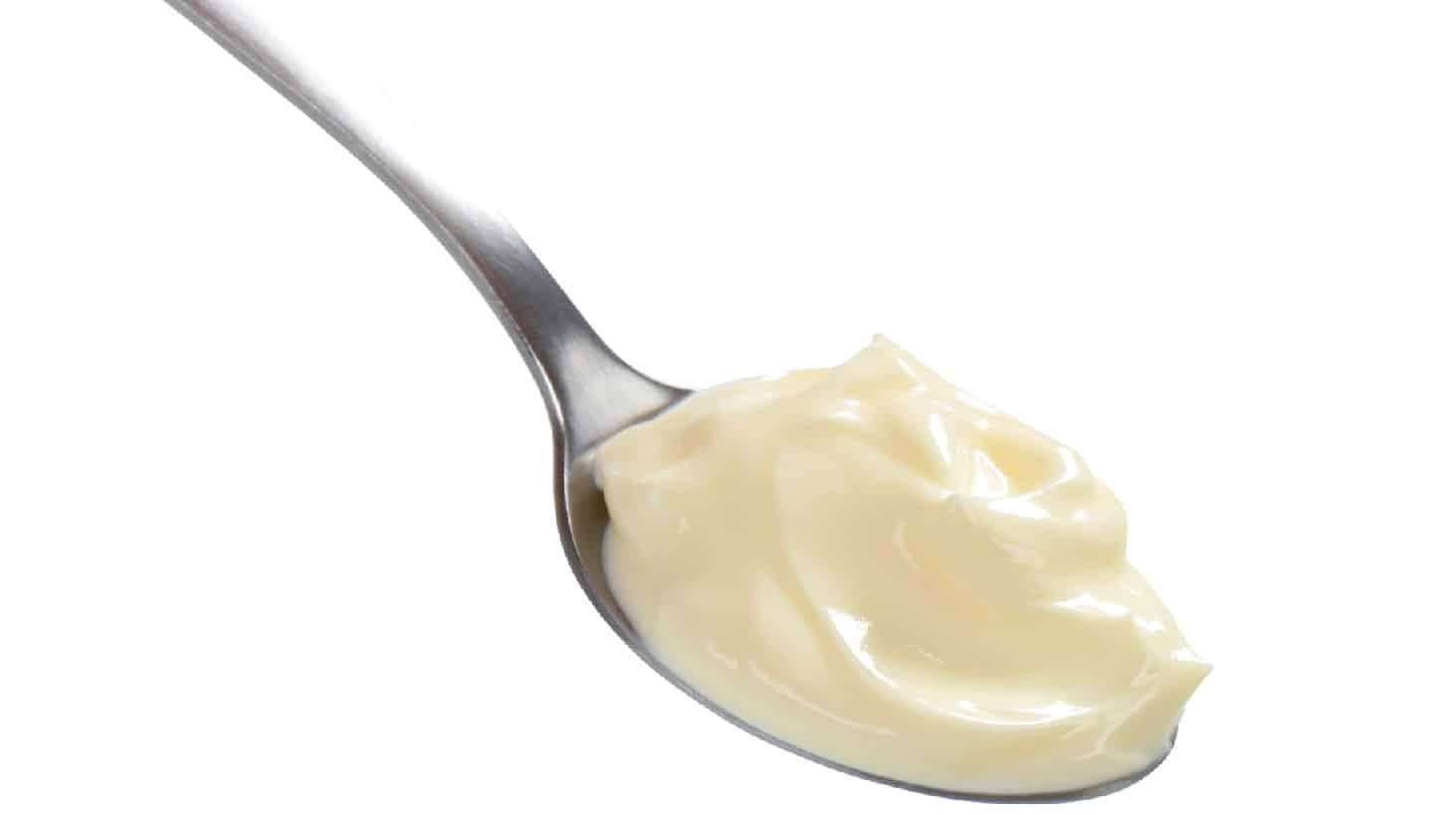
Attention! The calorie content of mayonnaise depends on its fat content. If you use low-fat or very fatty mayonnaise, the number of calories in mayonnaise can be very different. In our calculations, we used regular mayonnaise in plastic packs (Provençal).
It has become very popular to use mayonnaise as a marinade ingredient. Be sure to try baking the chicken in the oven , but before that, marinate it in mayonnaise using 4 tablespoons of mayonnaise.
Measure, measure milk in glasses in grams (measuring table)
To compile this table, we used 250 ml. faceted glass (filled to the top). This means that if a faceted glass is filled to the risk, its volume will be 200 ml.
| Milk quantity | Number of glasses |
| 800 grams of milk is | 4 cut glasses of milk, filled according to risk |
| 750 grams of milk is | 3 full faceted glasses of milk |
| 700 grams of milk is | 3.5 glasses of milk, filled at risk |
| 600 grams of milk is | 3 glasses of milk, filled according to risk |
| 500 grams of milk is | 2 full faceted glasses of milk |
| 400 grams of milk is | 2 glasses of milk, filled according to risk |
| 300 grams of milk is | 1.5 cups milk, filled at risk |
| 250 grams of milk is | 1 full faceted glass of milk |
| 200 grams of milk is | 1 faceted glass of milk, filled according to risk |
| 150 grams of milk is | About a little less than 2/3 cup milk |
| 100 grams of milk is | 0.5 cups of milk, filled to the brim |
| 50 grams of milk is | 1/5 cup milk |
Measure, measure milk in glasses in milliliters (measuring table)
| Milk quantity | Number of glasses |
| 1 l. milk is | 4 full cut glasses of milk (250 ml.) |
| 900 ml. milk is | 2 full glasses of milk, filled to the rim + 2 glasses of milk, filled to the rim |
| 800 ml. milk is | 4 cut glasses of milk, filled according to risk |
| 750 ml. milk is | 3 full faceted glasses of milk |
| 700 ml. milk is | 3.5 glasses of milk, filled at risk |
| 600 ml. milk is | 3 glasses of milk, filled according to risk |
| 500 ml. milk is | 2 full faceted glasses of milk |
| 400 ml. milk is | 2 glasses of milk, filled according to risk |
| 300 ml. milk is | 1.5 cups milk, filled at risk |
| 250 ml. milk is | 1 full faceted glass of milk |
| 200 ml. milk is | 1 faceted glass of milk, filled according to risk |
| 150 ml. milk is | About a little less than 2/3 cup milk |
| 100 ml. milk is | 0.5 cups of milk, filled to the brim |
| 50 ml. milk is | 1/5 cup milk |
How many milliliters of milk are in a faceted glass?
One faceted glass filled to the top (to the rim) holds 250 ml of milk.
1 faceted glass filled to the risk holds 200 ml of milk.
How many calories are in a glass of milk
One full glass of milk (2.5% fat) contains 130 calories.
How can you measure the required amount of milk in grams using a faceted glass?
- 800 grams of milk is how many glasses? 800 g of milk = 4 faceted glasses of milk, filled according to risk (not full).
- 750 grams of milk is how many glasses? 750 g of milk = 3 full faceted glasses of milk, filled to the rim.
- 700 grams of milk is how many glasses? 700 g of milk = 3.5 glasses of milk, filled at risk.
- 600 grams of milk is how many glasses? 600 g of milk = 3 glasses of milk, filled at risk.
- 500 grams of milk is how many glasses? 500 g of milk = 2 faceted glasses of milk, filled to the rim.
- 400 grams of milk is how many glasses? 400 g milk = 2 glasses of milk, filled at risk.
- 300 grams of milk is how many glasses? 300 g of milk = 1.5 glasses of milk, filled at risk.
- 250 grams of milk is how many glasses? 250 g of milk = 1 full faceted glass of milk.
- 200 grams of milk is how many glasses? 200 g of milk = 1 faceted glass of milk, filled according to risk.
- 150 grams of milk is how many glasses? 150 g of milk = 10 tablespoons of milk.
- 100 grams of milk is how many glasses? 100 g of milk = half a cut glass of milk.
How to measure the required amount of milk in milliliters (ml) or liters (l) using a cut glass?
- 1 liter of milk is how many glasses? 1 liter of milk = 4 full faceted glasses of milk, filled to the brim.
- 900 milliliters of milk is how many glasses? 900 ml of milk = 2 full glasses of milk, filled to the rim + 2 glasses of milk, filled to the rim.
- 800 milliliters of milk is how many glasses? 800 ml milk = 4 glasses of milk, filled to the top.
- 700 milliliters of milk is how many glasses? 700 ml of milk = 3.5 faceted glasses of milk, filled to the brim.
- 650 milliliters of milk is how many glasses? 650 ml of milk = 2 glasses of milk, filled to the top + 1 full glass of milk, filled to the top.
- 600 milliliters of milk is how many glasses? 600 ml milk = 3 glasses of milk, filled to the top.
- 500 milliliters of milk is how many glasses? 500 ml (half a liter) of milk = 2 full glasses of milk, filled to the top.
- 400 milliliters of milk is how many glasses? 400 ml of milk = 2 faceted glasses of milk, filled to the brim.
- 300 milliliters of milk is how many glasses? 300 ml milk = 1.5 glasses of milk, filled to the top.
- How much is 280 milliliters of milk in a glass? 280 ml of milk = 1 full glass of milk, filled to the top + 2 tablespoons of milk.
- 250 milliliters of milk is how many glasses? 250 ml of milk = 1 full faceted glass of milk.
- 200 milliliters of milk is how many glasses? 200 ml milk = 1 glass of milk, filled to the top.
- 160 milliliters of milk is how many glasses? 160 ml milk = 10 tablespoons milk + 2 teaspoons milk.
- 150 milliliters of milk is how many glasses? 150 ml milk = 3/5 full glass of milk.
- 100 milliliters of milk is how many glasses? 100 ml of milk = 0.5 cups of milk, filled to the brim.
We calculate how much milk is contained in an incomplete faceted glass (we count the proportion of a full glass of milk filled to the rim)
- How much is 4/5 cup of milk? 4/5 glass of milk = 200 grams of milk.
- How much is 3/4 cup of milk? 3/4 cut glass of milk = 187.5 grams of milk.
- How much is 2/3 glass of milk? 2/3 cup milk = 167 grams of milk.
- How much is 1/2 glass of milk? 1/2 cup milk = 125 grams of milk.
- How much is 1/4 cup of milk? 1/4 cup milk = 62.5 grams of milk.
- How much is 1/5 cup of milk? 1/5 cup of milk = 50 grams of milk.
It is easier to measure a small amount of milk using a tablespoon or teaspoon, so we recommend reading the review on how much milk is in a spoon.
In conclusion to the article, it can be noted that knowing how to measure milk using a faceted glass, you can easily measure in milliliters and grams the required mass and volume of milk according to a recipe with high accuracy. We leave our reviews and advice on the topic of how much milk in a glass in the comments to the article and share it on social networks if it was useful to you.
Yulia Sabinova
Chief editor of the site. Cook, technologist, traveler. I love to cook, read interesting articles about cooking and proper nutrition, learn everything new and share the most interesting things with others. I am glad to see you on the pages of the InfoEda website.
Save on social networks:
What units of measurement exist in cooking?
In culinary recipes, ingredients are most often measured in milliliters, grams and cups. How do these three units of measurement differ? The fact is that the amount of solid products, for example, oil, is usually indicated in grams. Milliliters are a measure of liquids: water, milk. Glasses are used both for measuring liquids and bulk products - flour, cereals.
Is this unspoken distinction always respected? For the most part, yes, but the fact that some recipes may indicate the amount of liquids in grams and dry solids in milliliters should not be an obstacle to preparing the desired dish. Therefore, the ability to convert milliliters into grams or glasses and vice versa, quickly and correctly, is the key to success for every housewife.
How to convert milliliters to grams?
One of the most necessary skills in the kitchen is converting milliliters to grams. Grams are a unit of mass that depends on the density and volume of the liquid being measured. If we are talking about water, then 100 ml of water will equal 100 g, since the density of water is approximately equal to 1.
In order to convert milliliters of milk into grams, you need to know that its density is on average 1.03. Using the formula, you can determine how many grams of milk are in 100 ml. This is not so difficult: you need to multiply the volume of the product by its density and get the result. In this case, the result will be a value equal to 103 g. Thus, the problem of how many grams of milk are in 100 ml is already a resolved issue.

How many grams in a milliliter: calculation and tables
In order to prepare a tasty and healthy dish, it is necessary to maintain the proportions of the ingredients. In this regard, the question often arises - how many grams are in a milliliter? You don't always have a kitchen scale or measuring cup at hand. First, let's understand the concepts of what a gram and a milliliter are.
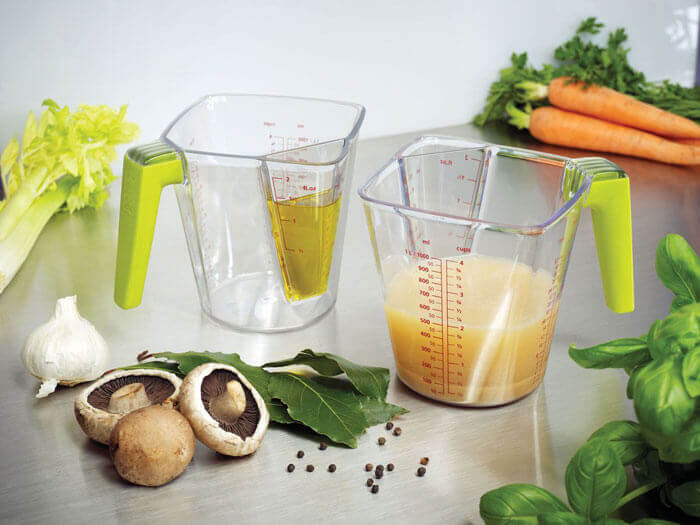
A gram is a unit of mass equal to one thousandth of a kilogram. Body weight is measured in grams.
A liter is a unit of volume equal to one cubic decimeter. A liter is a non-systemic unit. In cooking, milliliters are usually used; one milliliter is equal to one thousandth of a liter or one cubic centimeter.
How do these two quantities relate to each other, how many milliliters are there in one gram? From a scientific point of view, the question cannot be formulated this way. Let's remember physics. To calculate mass, you need to multiply the volume by the density of the substance. The density of matter can be found in any physical reference book.
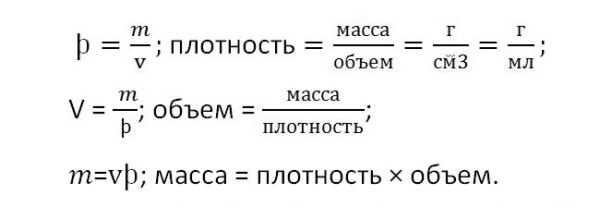
The basic formula for converting grams to milliliters and vice versa
The density of water can be taken equal to unity. Therefore, if we are talking about water, then the answer to the question, 500 g is how many milliliters, will be this - 500 g of water corresponds to five hundred milliliters. But different liquids have different densities.
The density of milk is 1.03 g/cm3. Therefore, if you want to get an answer to the question, 200 grams of milk is how many milliliters, you need to do the following:
- From the above formula, we find that volume equals mass divided by density.
- Let's substitute these values.
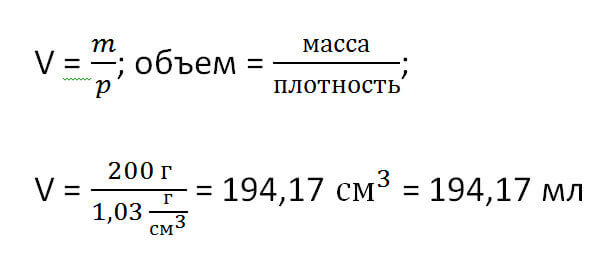
200 grams of milk in milliliters
Therefore, 200 g of milk has a volume of 194.17 ml.
The density of sunflower oil is 0.93 g/cm3. If you are interested in how many grams of oil are in one milliliter, we will make the following calculation.

How many grams of sunflower oil are in one milliliter
Let's move on to more understandable values, one liter of sunflower oil has a mass of 930 g.
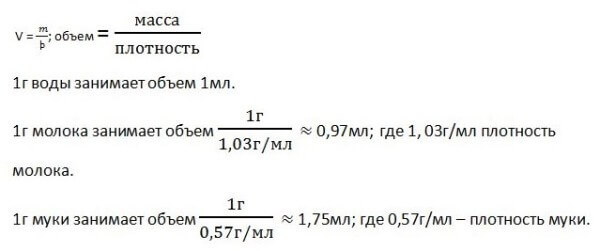
The density of bulk substances is even less. If you have flour in a recipe and you want to know how many milliliters are 250 g of flour, using the formula, you can calculate it. You need to divide the mass by density, which for flour is 0.59 g/cm3.
How many milliliters are 250 grams of flour?
In the same way, we determine how many milliliters are 100 g of sugar? The density of sugar is 0.8 g/cm3.
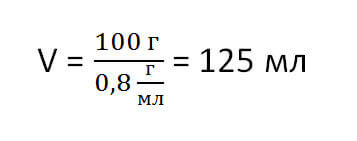
100 grams of sugar in milliliters
Many products are used in very small quantities when preparing dishes. It is more convenient to know how much product is contained in a tablespoon or teaspoon.
We recommend: How to fry pancakes correctly?
A tablespoon contains:
- poppy – 15 g;
- corn starch – 30 g;
- powdered sugar – 25 g;
- salt – 30 g;
- soda – 28 g;
- cocoa – 20 g;
- cinnamon – 20 g.
A teaspoon contains:
- poppy – 5 g;
- corn starch – 10 g;
- powdered sugar –8 g;
- salt –10 g;
- soda – 12 g;
- cocoa – 10 g;
- cinnamon – 8 g.
Understanding how many grams are in a milliliter, you can, in principle, do without cutlery, measuring cups and other devices in order to measure almost any product. In addition, the table will help you not only when baking confectionery, you can use it to measure out cereals for cooking porridge, sugar, sunflower oil for recipes with unsweetened products, and so on. And also to make a calculation, knowing how many milliliters are in one gram of water, you can easily calculate how much liquid is required for a particular recipe. Experienced housewives understand how important it is to maintain proportions - precisely measured amounts of ingredients for the future dish allow you to do everything correctly and not spoil the food. Therefore, if you have a question about how many grams are in a milliliter, the table will help you calculate the weight of the components correctly.

How to measure the right amount of milk using glasses?
However, to understand all the recipes, it is not enough to know only that 100 ml contains 103 grams of milk. If a person gets used to measuring milk exclusively in milliliters and grams, sooner or later one of the recipes will pose the following question to him: 100 grams of milk - how much is it in glasses?
Do not be afraid of the problem that has arisen, since it is quite easy to solve. To convert grams to glasses, you need to know that one thin glass holds 250 grams of milk. Thus, 100 grams of milk is 2/5 of such a glass. If we take a faceted glass as a unit of measurement, into which you can pour 200 grams of the desired liquid, then 100 grams of milk will then be exactly half a glass.
How many calories are in a spoonful of milk?
Almost every person is worried about their figure! Therefore, it will be interesting for you to know the calorie content of one spoon of milk. For your convenience, a table has been compiled, see below.
How many calories are in a teaspoon of milk?
1 teaspoon of milk = 3 kcal
How many calories are in a tablespoon of milk?
1 tablespoon of milk = 10 kcal
* 100 grams of 2.5% milk = 54 calories
How many calories are in a tablespoon of milk powder?
1 tablespoon of milk powder = 95 kcal
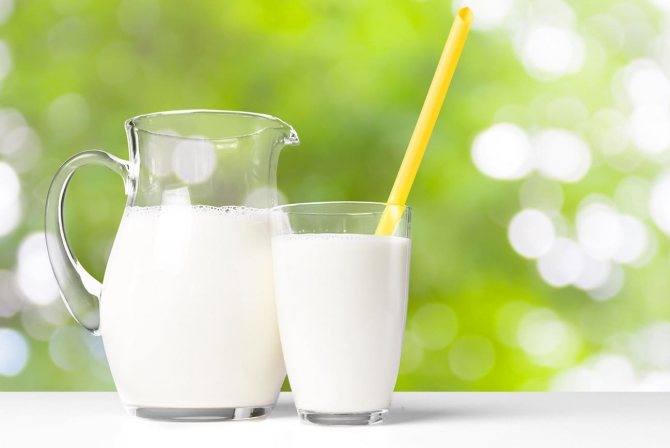
Calorie content of a teaspoon of milk (question, answer)
- How many calories does 1 teaspoon of milk contain? = 3 calories
- How many calories are in 2 teaspoons of milk? = 6 calories
- How many calories are in 3 teaspoons of milk? = 9 calories
- How many calories are there in 4 teaspoons of milk? = 12 calories
Calorie content of a tablespoon of milk (question, answer)
- How many calories does 1 tablespoon of milk contain? = 10 calories
- How many calories are there in 2 tablespoons of milk? = 20 calories
- How many calories are in 3 tablespoons of milk? = 30 calories
- How many calories are in 4 tablespoons of milk? = 40 calories
What else do you need to know when preparing dairy dishes?
- The densities of regular and skim milk are different, therefore they have different weights, which, however, is not important for most recipes that are prepared at home.
- 103 grams is a value close to 100, so when preparing dishes at home, when accuracy is not so important, the difference of 3 grams is not taken into account, and the amount of milk is rounded down. Thus, knowing how many grams are in 100 ml of milk is not something that is vital for cooking every day.
- You can use a measuring cup to measure the volume of milk - this will greatly facilitate the cooking process.
- If for some reason there is more milk in the dough than stated in the recipe, do not despair! Liquid foods can be balanced by adding flour or simply increasing all other ingredients. The dish will turn out a little larger than planned, but this is not a reason to be upset.
Prepare your favorite dishes using the correct proportions.
If you don’t have a measuring cup at hand, then the volume or weight of liquid or bulk products can be measured using a regular glass. However, glasses are different: large and small, faceted and smooth, thick and thin, with and without a rim - it is not a fact that their volume corresponds to the standard.
Therefore, to measure, we recommend using the most common standard faceted glass with a rim (200/250 ml), or using our instructions.
How many calories are in mayonnaise
Mayonnaise increases a person's appetite and improves the taste of dishes. But doctors recommend reducing your consumption of industrial sauce, as it contains harmful chemical additives.
100 grams of classic mayonnaise contains about 600 calories, so it should not be eaten by people prone to gaining excess weight. Its regular use provokes stomach and liver diseases, worsens the condition of human skin and leads to obesity.
As an alternative to harmful sauce, you can make your own homemade mayonnaise from natural ingredients.
WEIGHT LOSS STORIES OF STARS!
Irina Pegova shocked everyone with her weight loss recipe: “I lost 27 kg and continue to lose weight, I just brew it at night. » Read more >>
Mayonnaise sold on store shelves is high in fat. Therefore, doctors recommend strictly limiting its use.
1 tablespoon of mayonnaise “with top” - 40 grams of product, 1 teaspoon - 12 grams.
The calorie content of mayonnaise and the content of proteins, fats and carbohydrates (BZhU) in its composition depend on the brand of the manufacturer. Therefore, to calculate the energy and nutritional value of a tablespoon and a teaspoon of sauce, you need to refer to the table below.
The table shows KBJU per 100 grams of mayonnaise.
The harmfulness of mayonnaise to the human body is due to the ingredients included in its composition:
- To produce the sauce, refined vegetable oil is used, the processing of which produces harmful trans fats. Pregnant women should not eat such foods, because they provoke pathologies of fetal development. Scientists have proven that men who regularly eat processed foods and fast food with large amounts of mayonnaise have lower testosterone levels and worsened sperm quality.
- Flavorings and flavor enhancers are addictive and increase a person’s appetite. Accumulating in the body, they lead to gastrointestinal disorders. The disease is characterized by pain in the stomach, nausea, vomiting and flatulence. In children, fragrances may cause allergic reaction symptoms.
- Preservatives extend the shelf life of mayonnaise and prevent the appearance of dangerous microorganisms in the sauce. They provoke intestinal upset, negatively affect the nervous system and lead to the formation of kidney stones.
- Synthetic emulsifiers are used in the process of preparing mayonnaise to give it a uniform consistency. They provoke inflammatory processes in the kidneys, increase cholesterol levels in the blood and disrupt the functioning of the cardiovascular system.
It is worth noting that more and more manufacturers do not add artificial colors, preservatives and flavors to mayonnaise. Before purchasing, you should familiarize yourself with the composition of the product and the expiration date (the shorter it is, the better).
Homemade mayonnaise contains natural ingredients, the moderate consumption of which does not harm human health. It can be eaten by both adults and children.
Homemade sauce components and their beneficial properties:
- Chicken eggs are easily digested by the body, so eating them does not lead to gaining extra pounds. The chemical composition of the product includes vitamins A, B1, PP, K, as well as minerals: calcium, potassium and iron. Eggs help speed up metabolism, cleanse blood vessels and develop mental abilities.
- Lemon juice is a valuable source of vitamins necessary for the normal functioning of the body. Vitamin C in its composition strengthens the walls of blood vessels and improves immunity.
- Vegetable oil contains fatty acids that maintain the strength of blood vessels and prevent the accumulation of fat in the liver tissue. The oil also protects the gastric mucosa.
- Mustard improves the taste of homemade mayonnaise and makes protein foods easier to digest. The seasoning can be eaten by people who are on a strict diet or follow the principles of proper nutrition (PN), as it activates metabolism and promotes the breakdown of fats.
Homemade mayonnaise is a healthy and tasty alternative to industrial sauce. You can season it with Olivier salad, herring under a fur coat, vegetable salad, or use it separately as a sauce for main dishes. Below are two popular recipes that take no more than five minutes to prepare.
To prepare the classic sauce you will need the following ingredients:
- chicken egg - 1 pc. ;
- lemon - 1/2 pcs.;
- refined vegetable oil - 300 ml;
- salt - 1/2 tsp;
- granulated sugar - 1 tsp;
- mustard - 1/2 tsp;
- ground black pepper - 1/4 tsp.
- 1. Break a chicken egg into a bowl. Add spices and vegetable oil to it.
- 2. Squeeze the juice from half a lemon and add it to the rest of the ingredients.
- 3. Using an immersion blender, beat the mixture until smooth and fluffy. It will take 40-60 seconds to beat. Transfer the finished mayonnaise into a convenient container and store it in the refrigerator.
The Mediterranean people use Alioli sauce as a dressing for fish dishes and salads. To prepare it you will need:
- garlic - 2 cloves;
- chicken egg - 1 pc.;
- refined olive oil - 200 ml;
- salt - to taste.
- 1. Peel the garlic, cut into four parts and place in a bowl.
- 2. Add the egg, butter and a pinch of salt.
- 3. Using a blender, beat all ingredients well. Spanish mayonnaise is ready.
Weight and volume in a faceted glass (ml, g)
How many ml in a glass? Volume of a faceted glass
– If you fill the glass to the rim , the volume of the product will be 200 ml . – If you fill it to the top , the volume will be 250 ml .
How many grams are in a glass?
Different foods have different weights: water, flour, sugar, salt, etc. - You can measure the weight of these and other products using the table.
How many grams of water are in a glass?
If you pour it to the rim, you get 200 grams of water. If you fill it to the top, there will be 250 g of water.
How much does an empty glass weigh?
An ordinary faceted glass (empty) weighs 220-230 g. The weight of other glasses can be from 170 to 250 grams.
After conducting a mini-research on custom glasses, we discovered two golden rules:
1. If the glass has a rim , then you need to fill it to the rim - then you get 200 ml
2. A glass without a rim - you need to fill it to the top - then you get 200 ml
But there can be exceptions to any rule, therefore, if in everyday life you use glasses other than standard faceted glasses, then we advise you to measure their volume once. This information will definitely come in handy when preparing dishes, even if you have scales at hand.
As practice shows, frequent work with scales quickly gets boring; moreover, in home recipes, products are often measured by volume rather than by weight - this makes scales useless in many cases.
How many grams are in a tablespoon: list
Every experienced housewife, when preparing various dishes, especially during baking, always maintains the exact proportions of ingredients.
After all, if you put in an inaccurate amount, the taste of the dish will change. Many women do not have special scales at home to accurately determine the weight of food.
In almost all recipes, the required amount of all ingredients is indicated in grams, milliliters, or measured in tablespoons and teaspoons. Many people do not know how many grams are in one spoon.

Let's consider how much weight the main bulk products that are used daily for making dishes can have:
- How many grams of flour are in a tablespoon. The component is about 30 grams, regardless of the type of flour.
It is most often used for baking. It is important to consider the exact proportions. If you make dough, the main thing is not to overdo it.
Otherwise, the dough may be tight or liquid. It is important to remember that any type of flour has the same weight. How many grams of sugar are in a tablespoon. Sugar is 25 grams. Even if you take powdered sugar.
Sugar is the main component; it must be added in the exact amount of grams as indicated in the recipe.
A small amount will make the dish bland; if you add more sugar, it will be cloyingly sweet. How many grams of salt are in a tablespoon. Salt can hold 28 grams, regardless of the type. Even if it is iodized.
It is the main component in the preparation of any dish. It is important to pour it strictly according to the recipe. If you add more of it, the dish will be spoiled.
- How many grams of honey are in a tablespoon? Honey can hold a weight of 30 grams. Also, the weight will not depend on its variety.
- Milk 20 gr.
- Vegetable oil, as well as linseed oil 18 g.
- Water 25 gr.
- Vinegar 15 gr.
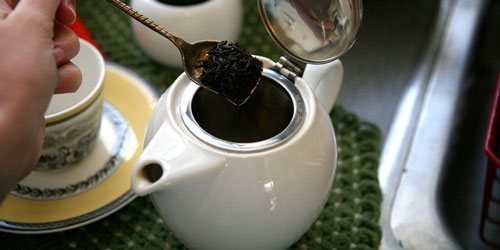
To make their work easier, experienced needlewomen make up a special list of products, how many grams are included in a tablespoon or teaspoon. It can be placed on the wall or refrigerator for convenience.
To easily measure, there is a list of how many grams a spoonful of liquid holds:
List of cereals:
- Buckwheat 25 gr.
- Manki 25 gr.
- Oatmeal 20 gr.
- Hercules 20 gr.
- Rice 25 gr.
Other frequently used products, in grams:
- Jam – 50.
- Gelatin powder – 15.
- Raisins – 25.
- Citric acid – 25.
- Mayonnaise – 25.
- Ground pepper - 18.
- Condensed milk – 30.
- Butter – 20.
- Sunflower oil – 18.
- Coffee – 20.
- Soda or baking powder - 20.
- Starch – 30.
Faceted glass with rim (200 ml) (glass No. 33, price 14 k)
An empty faceted glass weighs 220-230 grams.
If you pour water into such a glass exactly up to the rim , then its volume will be 200 ml and its weight will be 200 g (tested experimentally). If you fill it to the top, the volume will be 250 ml, and the weight of water will be 250 grams.
So, to correctly measure the volume of water, flour and other products and substances, a faceted glass should be filled exactly to the rim , or exactly to the top .
The measurement accuracy using such a glass can be quite high, for example, when checking the first time and without special preparation, 200.3 grams of water were poured into the glass.
A faceted glass should be filled exactly to the rim - this corresponds to a volume of 200 ml, or a water weight of 200 grams.
A faceted glass filled to the top holds 250 ml, which corresponds to the weight of water 250 g.
